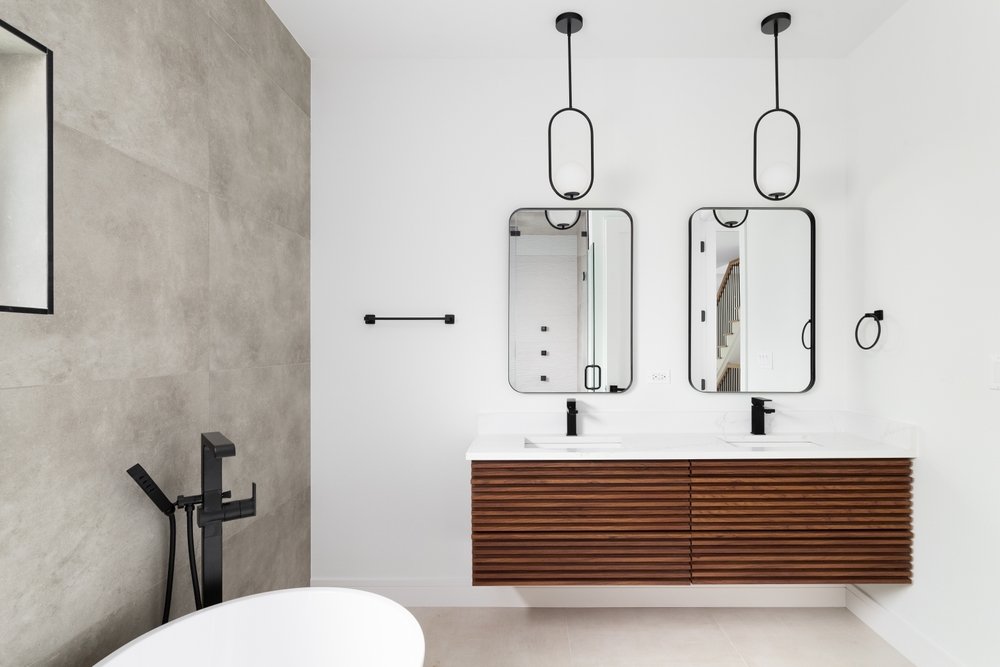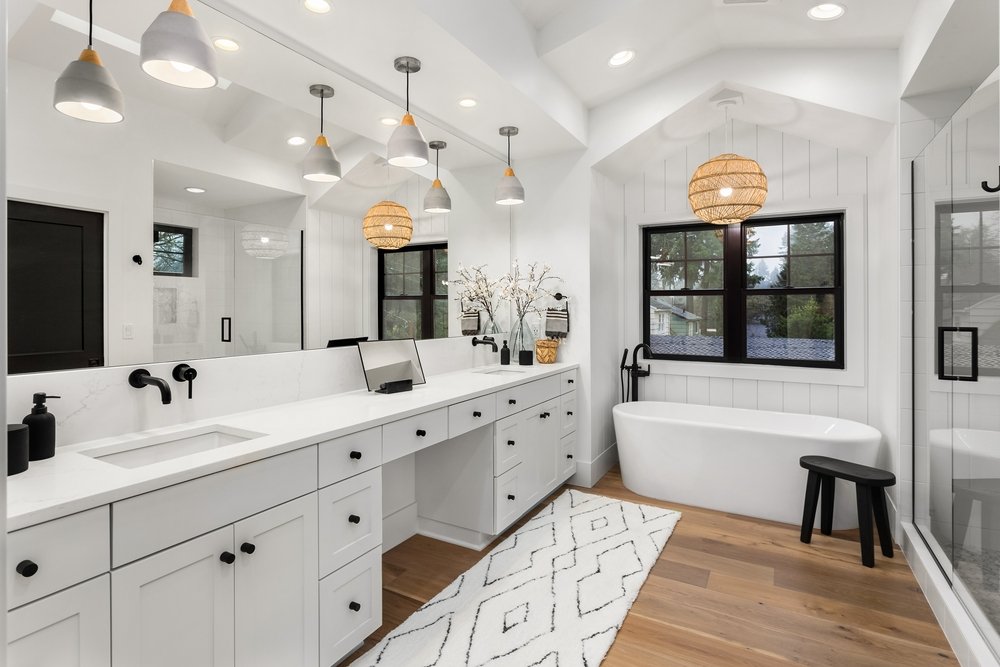Have you ever stood in your tiny bathroom, frustrated by the lack of space and storage options? Do you dream of fitting a stylish vanity that complements your décor without crowding your limited floor area? If you answered “yes,” then slimline bathroom vanities might just be the perfect solution for you. These space-saving beauties are designed to fit snugly in smaller bathrooms or ensuites, giving you a sleek, functional area without sacrificing comfort.
Before you rush out to buy one, it’s worth knowing some of the pitfalls people encounter when installing slimline vanities. In this small bathroom blog, we’re going to look at common mistakes to avoid—covering everything from measuring errors and plumbing mishaps to choosing the wrong materials. We’ll also discuss why these sleek vanities are held in such high regard by homeowners who are keen to maximise floor space.
By the end of this article, you’ll have a firm grasp on the key benefits of slimline vanities and how to dodge the most frequent installation blunders. We’ll cover measuring tips, plumbing considerations, and much more. Let’s kick things off by seeing what makes a slimline bathroom vanity ideal for a small bathroom, not to mention why so many Australians are embracing these sleek designs.
What Makes Slimline Bathroom Vanities Ideal for a Small Bathroom?
Slimline vanities are crafted to have a shallower depth than traditional models, which is perfect if you find yourself tight on space. Their compact dimensions let you easily move around in your bathroom without feeling cramped. Plus, manufacturers are increasingly coming up with custom styles and colours, so you don’t have to compromise on design.
Key Benefits of Choosing a Slimline Vanity
Apart from space savings, slimline vanities offer modern, minimalist aesthetics that can make a small bathroom feel more open. They come in freestanding or wall-mounted styles, meaning you can select a version that suits both your taste and your bathroom’s existing layout. Because they’re designed with smaller spaces in mind, many slimline vanities provide storage solutions that make the most of every inch of available room.
Common Mistakes When Measuring
Installing a slimline bathroom vanity involves a few steps, but one of the most important is measuring. You’d be surprised how often people overlook simple measuring procedures or miscalculate the space. Making sure you get the measurements right from the start will save you a world of hassle later on.
How to Measure for a Slimline Vanity in a Small Bathroom
Measuring your bathroom properly sounds like an obvious step, but it’s easy to go wrong if you’re in a rush. First and foremost, measure the width of the space where you plan to install the vanity, taking note of any obstructions such as towel rails or power points. Next, measure from the floor upwards to confirm the height you want. It’s vital to think about where the vanity will intersect with existing furnishings, including the door swing and any shelves.
After that, focus on the depth. This is the distance the vanity will protrude into your room. Since the entire point of a slimline vanity is to save space, you want a unit that offers ample storage without being too deep. It helps to use a tape measure that you can lock in place and double-check each measurement to prevent mistakes.
Avoiding Errors with Depth, Height, and Width
When you’re dealing with a small bathroom blog design, even a few extra centimetres can mean the difference between a comfortable walkway and a cramped shuffle. Avoid focusing solely on width; depth can be even more crucial for narrow bathrooms. If you’re installing a wall-mounted vanity, be mindful of the height at which it will be mounted. A poorly placed vanity might feel awkward or make daily tasks more difficult.
Always measure at least twice and consider making a simple floor plan sketch. Mark the positions of toilets, showers, doorways, and windows. That sketch becomes a handy reference when you’re shopping around for vanities. Many Australians find that creating a paper or cardboard template of the vanity’s footprint helps them spot potential clashes before making a purchase.

Overlooking Plumbing Requirements
Plumbing is often overshadowed by the excitement of choosing colours, textures, and vanity styles. However, ignoring plumbing considerations can lead to big headaches down the track. Pipes that don’t align with the vanity’s cut-outs can cause you to make last-minute modifications, costing extra time and money.
Checking Existing Pipework and Drainage
Before picking your slimline vanity, look at where your pipes currently sit. Are they coming through the wall or the floor? Is your drainage system lined up with the sink’s intended position? If you have older pipework, you should also make sure that it’s in good condition. In some cases, a slight repositioning of pipes might be needed, so factor that into your budget and timeline.
Remember to take note of hot and cold water lines, as well as waste pipes. If you realise too late that your pipes won’t work with the vanity’s design, you might have to remove sections of your cabinets to accommodate them. That can significantly reduce the storage space you were hoping to gain.
Can I Install a Slimline Vanity Alone or Do I Need a Plumber?
If you’re confident in your DIY skills—perhaps you’ve installed taps or sinks before—you might install your slimline vanity on your own. However, Australian plumbing regulations can be strict. Certain types of plumbing work are only legal for licensed professionals to complete. If you’re unsure about your local guidelines, it’s best to consult a plumber.
Even if regulations allow you to DIY, it’s a good idea to have a plumber check your pipe alignments before you finalise the installation. A qualified professional can spot potential issues such as leaks or incorrect angle placements. Consider it an investment for long-term peace of mind.
Ensuring Proper Ventilation and Water Flow
Making sure that water can drain properly is critical. If your vanity is causing your pipes to kink or bend in odd ways, drainage problems can arise. Similarly, poor ventilation can lead to mould and mildew building up behind your vanity, especially in areas with high humidity.
Include a little breathing room at the back of your vanity so that air can circulate. This space also makes it easier to access the pipes for maintenance. If you’re in a region of Australia prone to high moisture, consider adding an extractor fan or improving the bathroom’s airflow to help prevent mildew.
Final Thoughts and Conclusion
We’ve covered a lot of ground, from the importance of measuring thoroughly to selecting the right materials for Australia’s often humid climates. Slimline bathroom vanities can truly transform a small space, giving you the storage you need without sacrificing extra floor area. By spending a bit more time planning and researching, you’ll avoid the pitfalls that lead to leaks, unsteady fixtures, or costly replacements.
